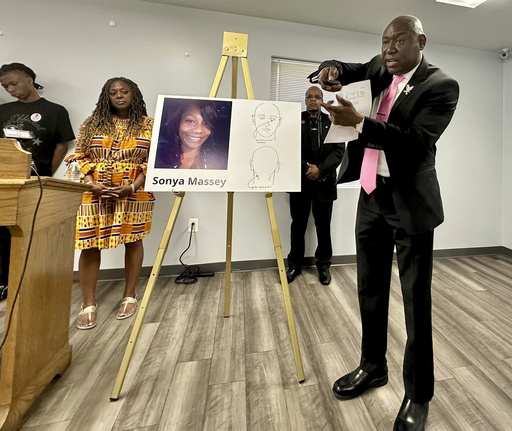In Springfield, Illinois, Sonya Massey, a Black woman who was shot by a sheriff’s deputy after seeking help by calling 911, had made a couple of other emergency calls in the days leading up to her death on July 6, as revealed by records released on Wednesday. The Sangamon County Sheriff’s Department is currently investigating whether Massey’s previous mental health issues were communicated to deputies responding to the call about a possible prowler, which tragically resulted in her demise.
Body-camera footage made public last week suggests that there was no prior knowledge of Massey’s mental health history. A few minutes after former deputy Sean Grayson shot Massey, he inquired with dispatch about any records of her previous calls indicating mental health concerns. The spokesperson for Sheriff Jack Campbell, Jeff Wilhite, explained that the information is shared if known; however, there is no automatic system in place for relaying such details.
On July 4, a third call was made from Massey’s address, although the caller did not provide their name. Grayson, 30, is facing charges of first-degree murder, aggravated battery with a firearm, and official misconduct in connection to Massey’s death. He has pleaded not guilty and is currently detained without bond.
Family members shared that Massey struggled with mental health issues and had received treatment. Her 17-year-old son, Malachi Hill Massey, mentioned that his mother had entered a 30-day inpatient program in St. Louis but had returned after just two days.
Massey’s encounters with law enforcement and medical professionals in the days before her death were documented in the released records. She had reached out for help due to various incidents, indicating her ongoing struggles with mental health. The events leading up to the fatal shooting shed light on the challenges faced by individuals dealing with mental health issues in interactions with law enforcement.
Following the tragic outcome, questions remain about the handling of mental health concerns during emergency responses and the communication of vital information to first responders. This case highlights the importance of proper protocols and training to ensure the safety and well-being of individuals, particularly those dealing with mental health challenges, during emergency situations.


